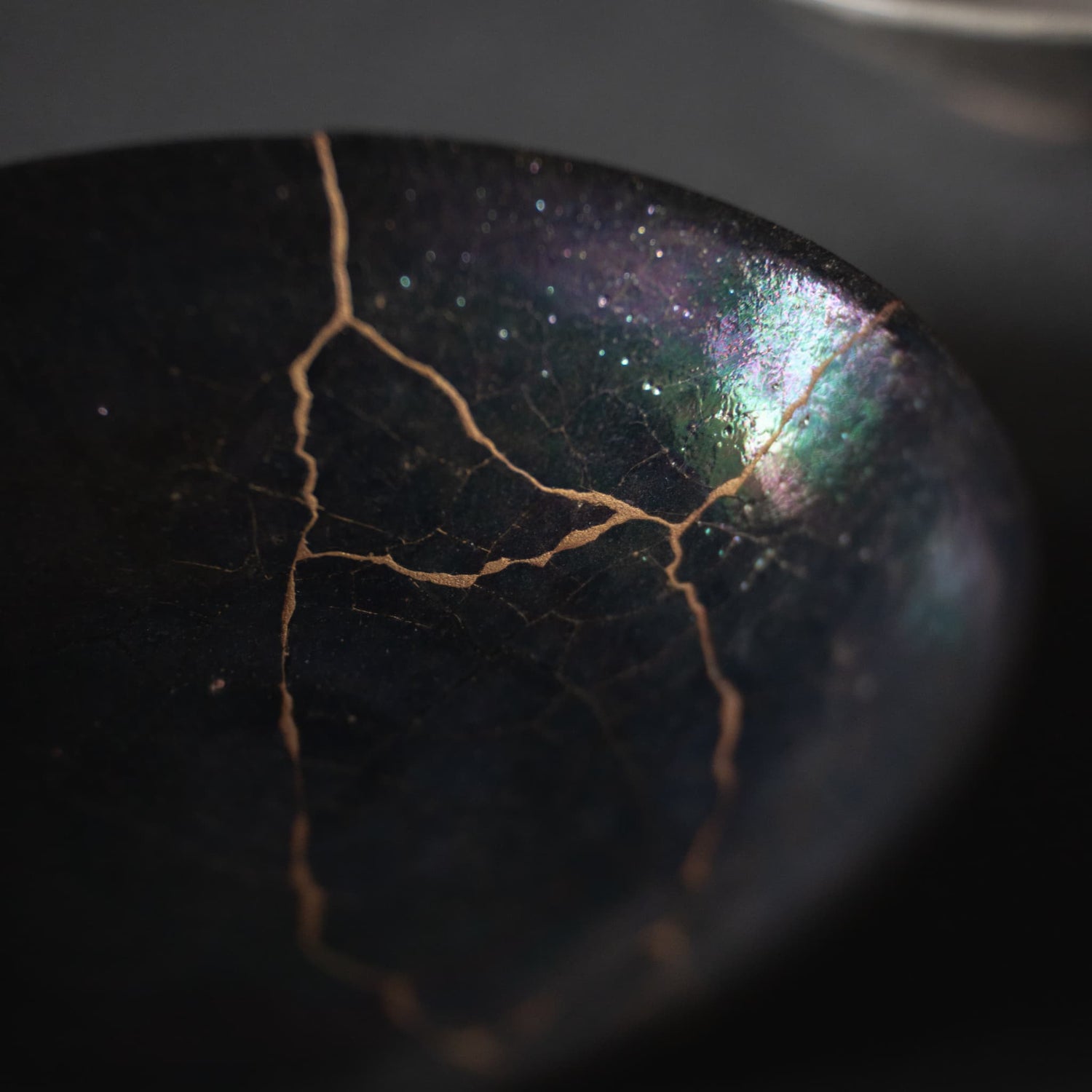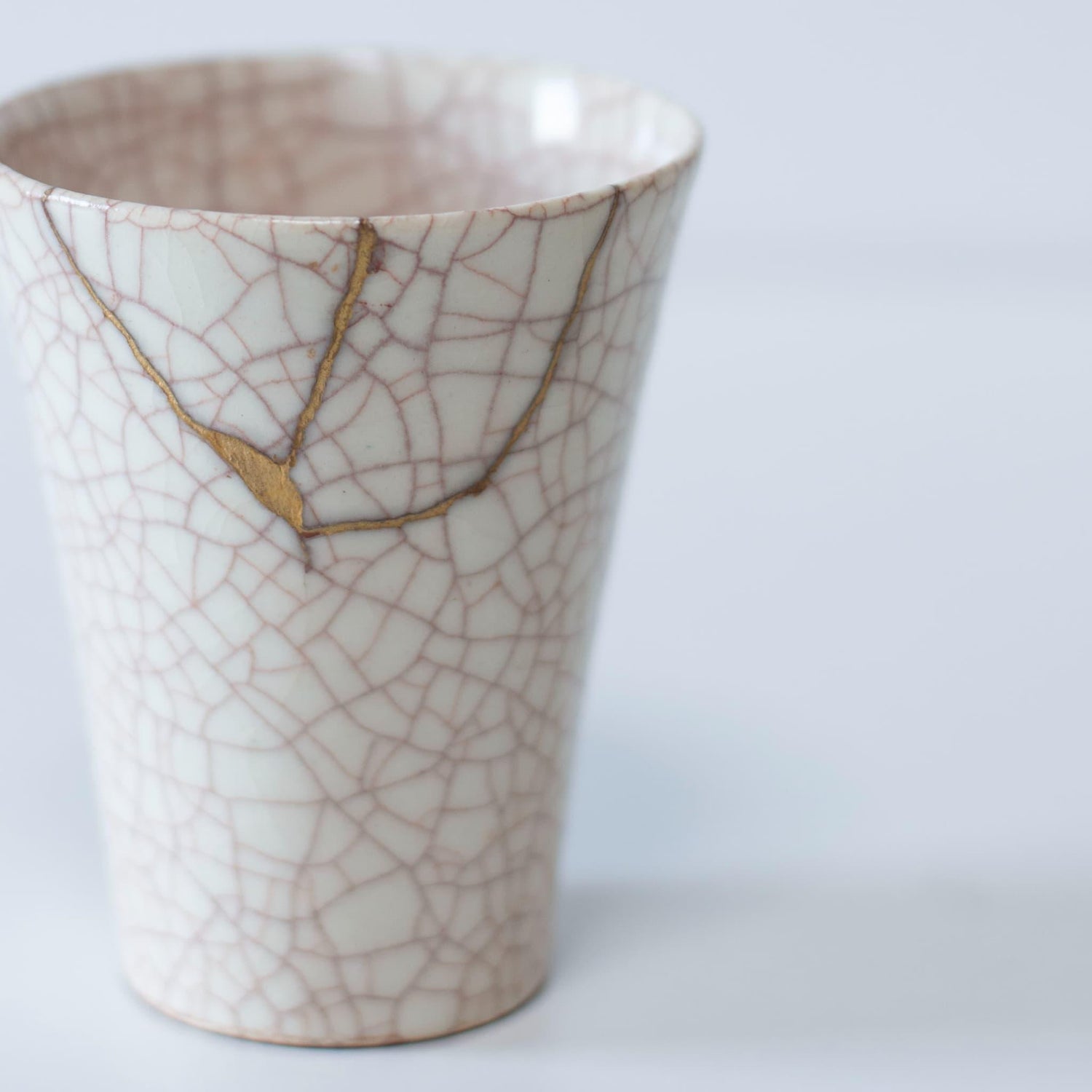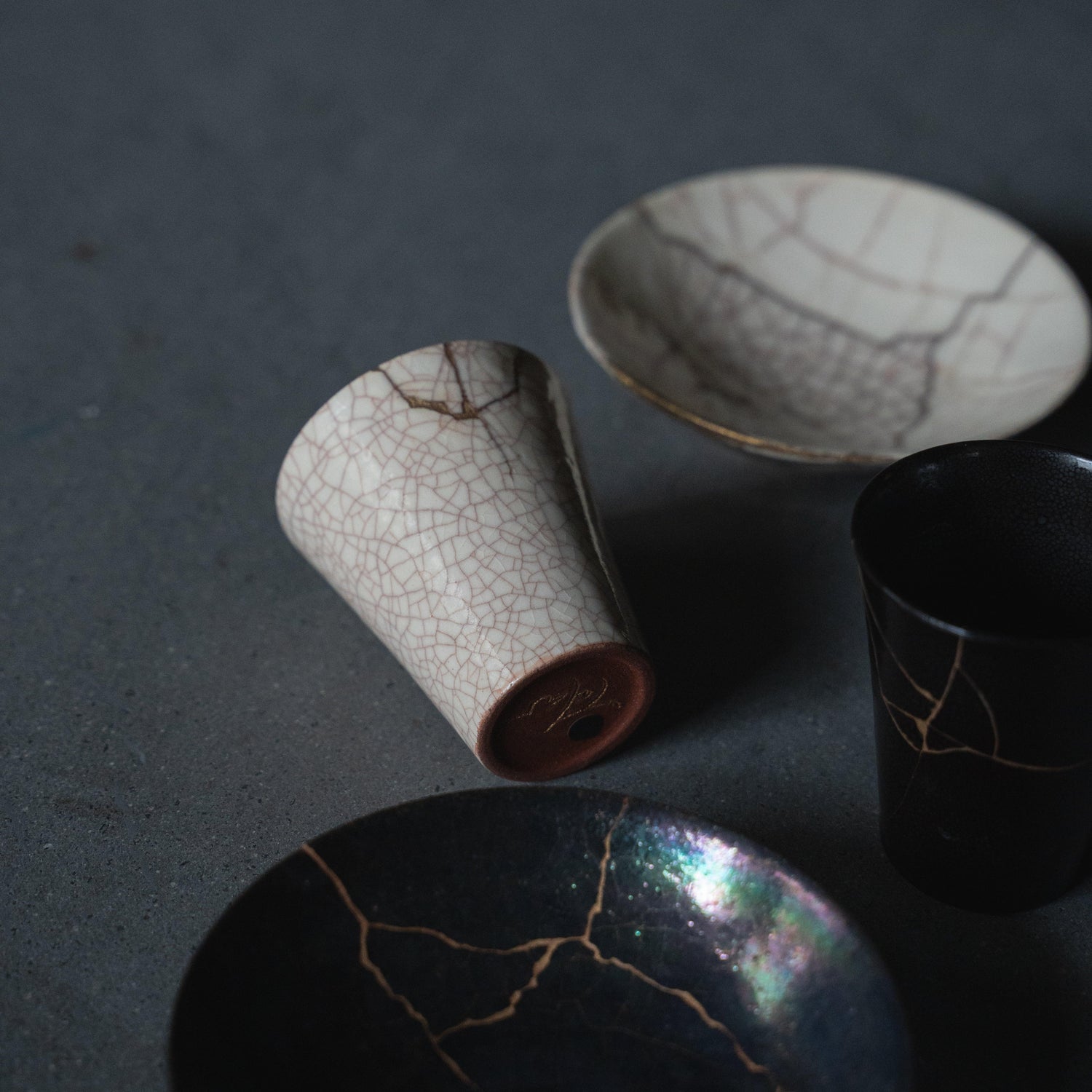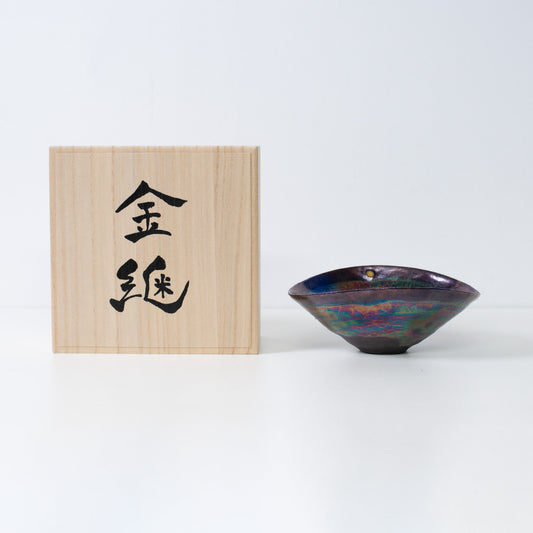
Kintsugi: The Japanese Art of Golden Repair
Share
Kintsugi is a traditional Japanese art and technique that repairs broken or chipped ceramics with lacquer, then embellishes them with gold, silver, or platinum powder. This technique finds meaning not just in repairing damaged items but in embracing the history and scars of an object, elevating them to a form of beauty. This concept is deeply connected with the uniquely Japanese aesthetic of "wabi-sabi," which finds beauty in imperfection and acceptance of flaws.
Table of contents
What is Kintsugi? The History of This Ancient Japanese Art
The technique of Kintsugi can be traced back to the Jomon period and has developed deeply in relation to the culture of Japanese tea ceremony throughout its long history. It emerged as part of lacquer craftwork or as an alternative to other ceramic restoration techniques. In the tea ceremony culture, where individuality and the unique history of each tea utensil are cherished, Kintsugi spread as a technique that embodies this spirit.
How Does Kintsugi Work? Different Styles and Techniques
Kintsugi includes various styles such as "hibi kintsugi," which repairs fine cracks with gold powder and lacquer; "kake no kintsugi," which restores entire missing parts with a gold-lacquer mixture; and "yobitsugi," which uses different-shaped fragments to replace missing parts of the original vessel. Various types of lacquer, such as pure lacquer and iron-red lacquer, are used in these techniques, and the work is carefully carried out in a controlled environment of humidity and temperature. Through this delicate process, broken ceramics are given new life and acquire unique beauty.
Kintsugi Today: From Art to Lifestyle, Embracing Imperfection
In modern society, the techniques, aesthetics, and philosophy of Kintsugi continue to influence many artists and designers. Kintsugi, which intertwines the creation of new values through destruction and repair with contemporary issues such as sustainability, is being passed down in new forms today. It is spreading globally as a culture that embraces and celebrates imperfection, highlighted by its mention in the closing ceremony of the 2021 Paralympics. Furthermore, Kintsugi is becoming more accessible through the sale of kits that allow people to try it at home easily.
Meet Taku Nakano: A Kintsugi Master Revolutionizing the Art
Taku Nakano, who runs a pottery studio in Omotesando, Minato-ku, Tokyo, creates unique ceramic pieces using precious metals, glass, and natural lacquer. Focusing on celestial (astronomical) motifs, he is a potter who creates art in his own style and works as a master of Kintsugi. A wine jar he restored upon request from the Georgian government was exhibited at a Georgian wine exhibition held in Tennozu Isle, symbolizing the encounter between Georgian wine culture and Japanese Kintsugi culture. Moreover, Nakano's approach of applying Kintsugi to ceramics and glass he creates, transforming them into upcycled pieces suitable for modern lifestyles, has been recognized by the Nikkei as "a globally noted movement that brings a new wave to traditional crafts." His flexible thinking, solid skills, extensive knowledge, and unique sense of combining these elements have earned him support from many ceramics enthusiasts, and he has taught over two thousand students, including celebrities and dignitaries.
Kintsugi is a traditional technique born from Japan's unique historical and cultural background, beautifully repairing broken ceramics. In Japan, frequently visited by natural disasters, a culture of restoration has been nurtured, emphasizing the value of overcoming adversity and rebirth into a stronger and more beautiful state. This spirit is reflected in Kintsugi, which aims to restore objects to an even more robust and beautiful condition beyond mere repair.

















